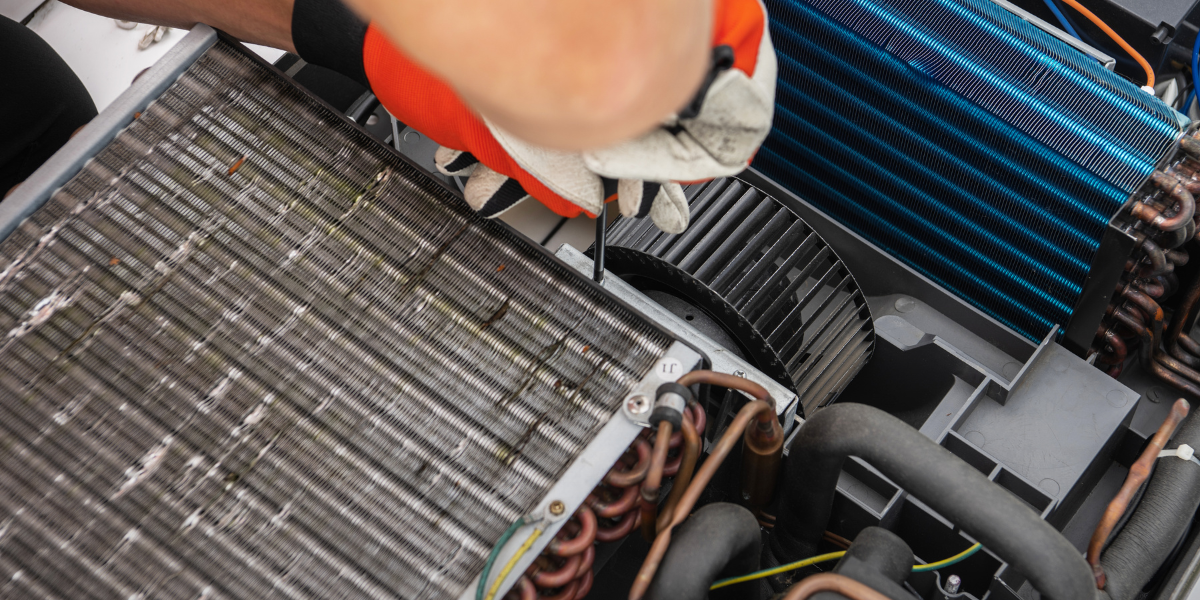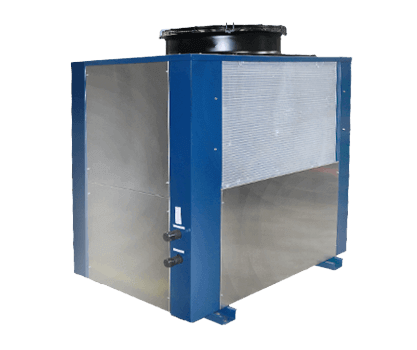What is a DX Coil? Function, Benefits, & Maintenance Tips

If you’ve ever stood next to a humming HVAC unit and wondered what makes it tick, you’re not alone. One of the most important components inside many systems is the DX coil. Short for direct expansion coil, it’s the part of the system that does the cooling.
What is a DX Coil?
A DX coil, or direct expansion coil, is a type of heat exchanger used in HVAC systems. It cools air by directly expanding refrigerant inside the coil. You’ll find DX coils in packaged rooftop units, split systems, and some ductless mini-splits.
Structurally, a DX coil includes tubes and fins (typically copper tubes with aluminum fins) to increase surface area for heat exchange. As refrigerant enters the coil, it evaporates and pulls heat from the air passing over the fins, cooling the air that flows into the space.
Also called an evaporator coil in cooling mode, the DX coil is where the cooling happens. It’s the part of the system that removes heat from the air, making the indoor environment more comfortable.
How Does a DX Coil Work?
Here’s the quick version: refrigerant enters the coil as a low-pressure liquid. As it pulls heat from the air, it evaporates into a gas. This phase change pulls heat out of the air stream, cooling it before it’s recirculated indoors.
It works alongside the compressor, expansion valve, and condenser in a closed-loop refrigeration cycle. Think of the DX coil as the sponge in your AC system that soaks up heat before releasing it at the condenser. Not glamorous, but it gets the job done.

Benefits of Using DX Coils
- Efficient Cooling: Delivers strong heat transfer thanks to direct refrigerant-to-air contact.
- Space-Saving: Suitable for areas where installation room is limited.
- Affordable: Often less expensive to install and maintain than chilled water systems.
- Quick Response: Offers fast temperature control, especially when system demand varies.
- Flexible Fit: Works well in many HVAC system designs.
Maintenance Tips
Taking care of a DX coil helps with performance and energy use. Here are some field-tested practices:
- Clean regularly. Dust, debris, and biological buildup can insulate the coil and reduce how well it cools. A dirty coil won’t perform properly.
- Inspect for corrosion. Especially in coastal or damp areas. Corrosion can damage the fins and tubing.
- Check insulation and drain pans. Damaged insulation or full pans can lead to water problems and mold. Nobody wants that surprise during a hot summer.
- Monitor refrigerant. Low refrigerant can cause icing and reduce cooling. Signs include warm air or hissing noises.
- Schedule routine service. At least twice a year, once before cooling season and once before heating season if your system runs all year.
Common Issues & When to Replace
Here’s a quick reference table of common coil issues and what they typically indicate:
| Issue | Possible Cause | Recommended Action |
| Low Airflow or Warm Air | Clogged coil, fan problem, or dirt buildup | Clean coil, inspect fan, check filter |
| Ice on the Coil | Low refrigerant or airflow blockage | Check refrigerant, inspect airflow |
| Refrigerant Leaks | Corrosion, worn joints or fittings | Leak test, repair or replace coil |
| Corrosion | Moisture exposure, poor coating | Inspect regularly, consider corrosion coating |
| Drain Pan Overflow | Clogged drain or damaged pan | Clear drain, replace pan if needed |
Even with good care, coils don’t last forever. To avoid coil failure, look out for these problems:
- Low Airflow or Warm Air: Might be a clogged or damaged coil.
- Ice on the Coil: Often points to airflow issues or refrigerant loss.
- Visible Damage or Leaks: If damage is widespread, it’s usually time to replace.
To decide between repair and replacement, look at the system’s age, cost of parts and labor, and how well it’s running overall. Swapping out an old coil can reduce energy bills and cut down on service calls. Your future self (and your maintenance budget) will thank you.
Ready to Upgrade or Replace Your Coils?
The DX coil might be tucked away inside your HVAC system, but it plays a major role in keeping indoor spaces comfortable. When it’s working well, you get consistent cooling, better energy use, and fewer headaches.
If your system isn’t cooling the way it used to, or it’s been a while since the last inspection, it may be time to take a closer look or swap it out entirely.
At CS Coil, we build and supply microchannel coils designed for lasting performance and exact system fit. We can help you get what you need fast, no guesswork and no delays.
Browse our product options or contact our team for custom coil support. We’re here to help keep your systems running right.